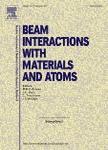版权所有:内蒙古大学图书馆 技术提供:维普资讯• 智图
内蒙古自治区呼和浩特市赛罕区大学西街235号 邮编: 010021

作者机构:Johannes Kepler Univ Linz Dept Expt Phys A-4040 Linz Austria Univ Southern Denmark Dept Phys Chem & Pharm DK-5230 Odense M Denmark
出 版 物:《NUCLEAR INSTRUMENTS & METHODS IN PHYSICS RESEARCH SECTION B-BEAM INTERACTIONS WITH MATERIALS AND ATOMS》 (物理学研究中的核仪器与方法,B辑:射束与材料及原子的相互作用)
年 卷 期:2019年第460卷
页 面:19-26页
核心收录:
学科分类:08[工学] 0804[工学-仪器科学与技术] 0827[工学-核科学与技术] 0702[理学-物理学]
主 题:Stopping power Binary theory PASS code DPASS code
摘 要:The first version of the PASS code was developed in 2000 on the basis of binary theory of electronic stopping, a generalization of Niels Bohr s 1913 theory of the stopping of alpha particles in matter. The code has been applied in a number of fundamental studies of energy-loss problems, including Barkas-Andersen effect and straggling as well as channeling and electron emission, and it underlies the ICRU tabulation of stopping data for ions with atomic numbers 3-16 in 25 elementary and 32 compound materials over an energy range from 25 keV/u to 1 GeV/u. We report about a major expansion of the code, so that mean energy losses can be computed for 92 ions in 92 elemental targets. Comparisons with measurements have been made over the entire energy range for which experimental data are listed in the IAEA database. The code allows to compute energy losses for arbitrary compound target materials by assuming Bragg additivity. Predictions beyond the Bragg rule are available for selected materials. In this paper we specify the underlying physics and improvements of the code during the period since its first implementation. Strengths and weaknesses are demonstrated graphically for a number of ion-target combinations. Tables for 92 x 92 ion-target combinations over an energy range from 1 keV/u to 1 GeV/u are freely accessible on the internet in the DPASS (Dataset PASS) code.